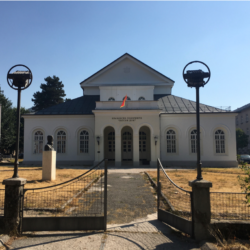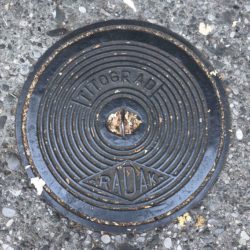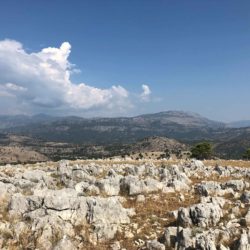
Podgorica became the capital of the Socialist Republic of Montenegro (a state within Yugoslavia) on July 13, 1946; the city at that time had been renamed Titograd in honor of the Yugoslav President Josip Tito. Before Titograd/Podgorica had been named the capital city the title had been bestowed upon Cetinje, a small city around 36km (22mi) west of the new capital. When Montenegro was first recognized as an independent nation in 1878, Cetinje was the most important city, both historically and culturally. The President of Montenegro still resides in Cetinje to this day; the National Museum and National Library are located here as well.
Ten of the most interesting buildings in Cetinje are the former embassies that once housed the diplomatic corps of their respective nations through WWI. All of the embassies are marked with a plaque. They are spread out throughout the city and it can make for a fun morning tracking them all down.
First things first, what’s the best way to get to Cetinje? Buses run regularly between Podgorica and the former capital, with the duration of the trip lasting approximately an hour. There’s no need to book ahead. Simply go down to the main bus station in Podgorica, buy a ticket and wait for the next bus heading that way. Once you get to Cetinje the bus stop is a quick five minute walk to the center of town where you can also find a visitor kiosk to pick up a map.
In no particularly order, here are the embassies, their plaques and a little info on what the buildings are being used for today:
1. The Serbian Embassy


The Serbian Embassy now houses the Ethnographic Museum of Montenegro, which has a small, but well displayed collection of traditional Montenegrin clothing.
2. The British Embassy


The British Embassy now houses the Academy of Music.
3. The German Embassy


The German Embassy is now a residential building.
4. The Bulgarian Embassy


The Bulgarian Embassy is now the restaurant City Cafe.
5. The Belgian Embassy


The Belgian Embassy is now a law office.
6. The Turkish Embassy


The Turkish Embassy now houses the Academy of Dramatic Arts.
7. The Russian Embassy


The (recently-restored) Russian Embassy is now the home of the Faculty of Fine Arts.
8. The French Embassy


The French Embassy now houses the special collections branch of the National Library.
9. The Austro-Hungarian Embassy


The Austro-Hungarian is the oldest embassy in Cetinje and now houses the Institute for Protection of Cultural Monuments.
10. The Italian Embassy


The Italian Embassy is now the main branch of the National Library.


